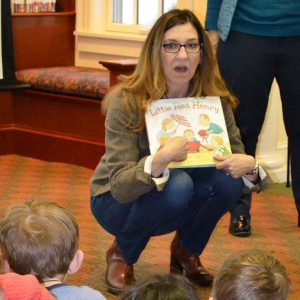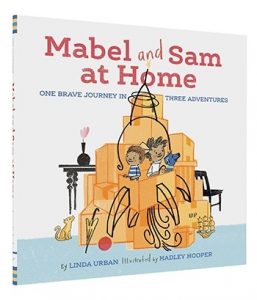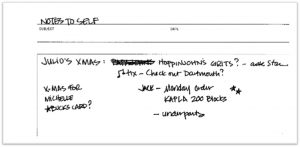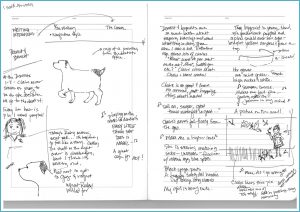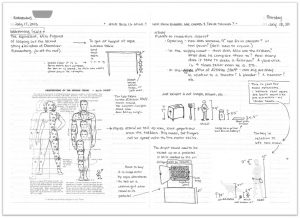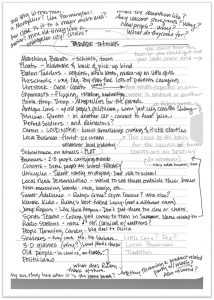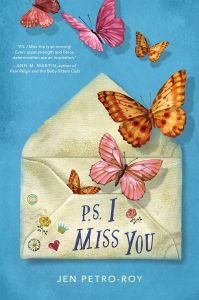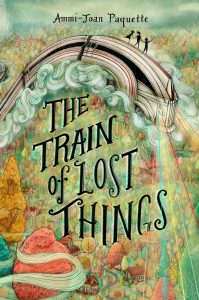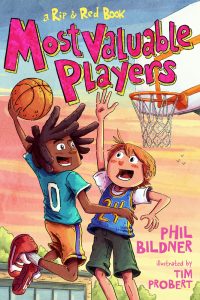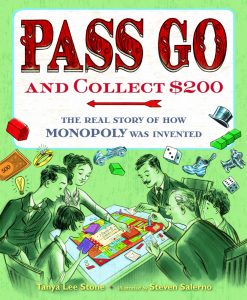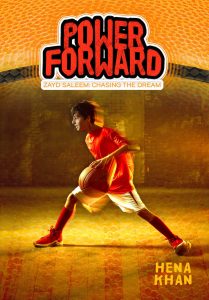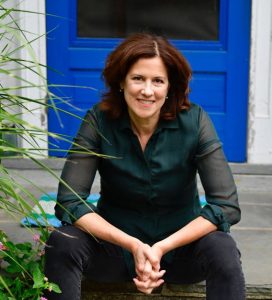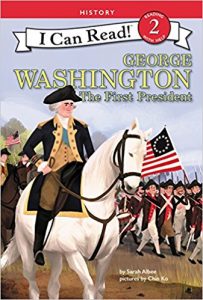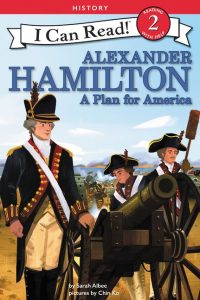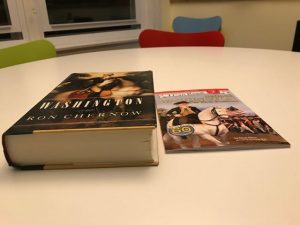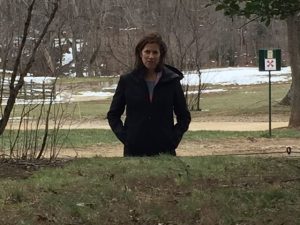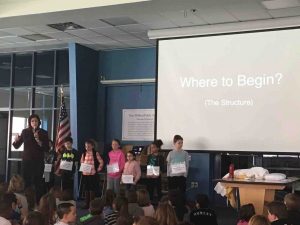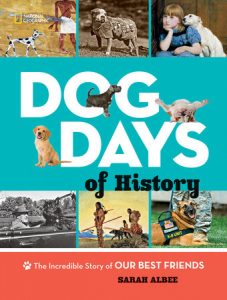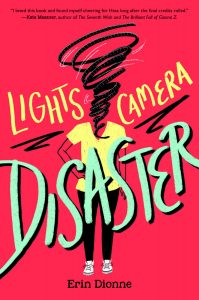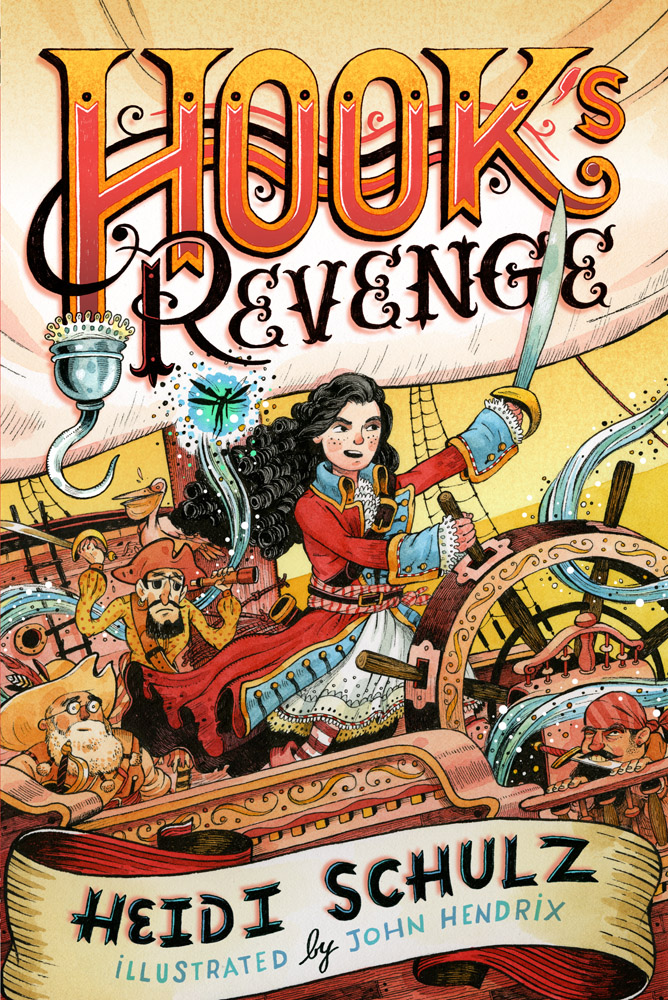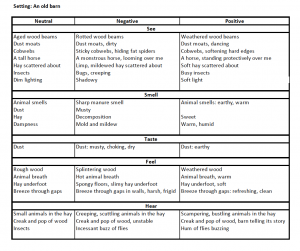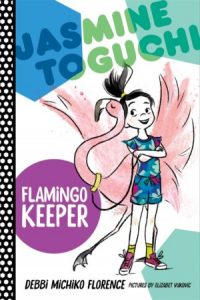Good morning! Jo has your Monday Morning Warm-Up here… and Chris Tebbetts joins us with today’s mini-lesson. Chris is the author and co-author of many books for young readers. Titles include the #1 New York Times bestselling MIDDLE SCHOOL series, as well as PUBLIC SCHOOL SUPERHERO, with James Patterson and illustrator Laura Park; the New York Times bestselling STRANDED series with Jeff Probst; and the young adult novel M OR F? with Lisa Papademetriou. His work has received children’s choice awards in Oregon and Hawaii, as well a Sunshine State Young Readers Award nomination, and a nod on the New York Public Library’s annual list of Books For the Teen Age. Watch for his YA novel, ME, MYSELF, AND HIM next summer—and in the meantime, you can reach him with questions or school visit inquiries at www.christebbetts.com.

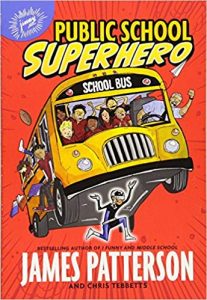
Three Steps to Character Dimension:
Internal Conflict, Contradiction, and Shadow Traits
I often think in terms of duality when I’m writing. I ask myself, what are the two sides to this story, this scene, this moment?
Or, for the purposes of today’s mini-lesson: what are the two sides to the characters I create? It’s a question that helps make the people who populate my stories more interesting, more human, more complex, and usually, more relatable.
To that end, here are three items for your writer’s toolbox; three ways to bring out the dimension in your own characters.
1) Internal Conflict
We all know that a story needs some sense of stakes. Your character needs a goal, and that goal needs to be impeded by some collection of obstacles and antagonist(s), creating the external conflict of your story.
But how about internal conflict? What conflicting stakes might exist—or could exist—within your character’s situation?
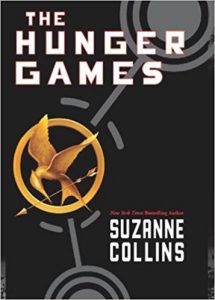
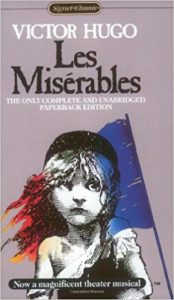
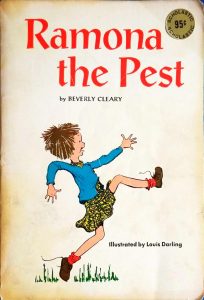
For Katniss Everdeen, there’s a driving tension at the heart of the story, between the rules of the Hunger Games (kill!) and her own moral compass (don’t kill!).
For Les Miserables’ Jean Valjean, it’s an internal conflict between his obligations to Cosette and to the rule of law, embodied by the story’s antagonist, Javert.
And for Ramona Quimby, it exists as a constant tension between what she knows she should do and what she wants to do.
What about in your own works in progress? Is there a way to complicate your character’s situation by giving her more than one want? And by making those wants mutually exclusive?
2) Contradiction
As Walt Whitman’s famous quote goes, “Do I contradict myself? Very well, then I contradict myself. I am large, I contain multitudes.”
Contradiction in characters is nothing new. It’s as old as story itself. And yet, at the same time, I have this sense that audiences are increasingly open to the idea of characters who don’t always turn one-plus-one into two. Characters who are more than one thing at the same time. Characters who contradict themselves and contain the multitudes that go with it.
In his excellent book, THE ART OF CHARACTER, David Corbett distills the role (and value) of contradiction into two things: 1) It defies expectations; and 2) It depicts complexity and depth.
He goes on to say:
“Developing a character with genuine depth requires a focus on not just desire but how the character deals with frustration of her desires, as well as her vulnerabilities, her secrets, and especially her contradictions. This development needs to be forged in scenes, the better to employ your intuition rather than your intellect.”
I like the way he emphasizes intuition in this case, since we’re dwelling into aspects of character that don’t always make sense on paper, but are, at the same time, completely and realistically human.
3) Shadow Traits
Here’s a bit more from THE ART OF CHARACTER:
“The tension created by these two antagonistic impulses – to control our behaviour so we “get along” and to let go and “be ourselves” – forms one of the core conflicts of our lives. And conflict is inherently dramatic…. For every trait we publicly exhibit, its opposite lurks somewhere in our psyches. These shadow traits may be feeble and ill-formed from lack of conscious use, but they exist – meaning that if a character acts unbelievably, we can make what he does seem more organic if we find a way to root it in the battle between the character’s conscious and suppressed behavior.”
Even as I write this article, I’m aware of the overlap between these ideas. Internal conflict is a kind of contradiction. And contradiction might easily contain some element of these so-called shadow traits, like Katniss Everdeen’s savage side, the part of her that comes out only by necessity. (Notice how that story begins with a hunting scene, where she’s killing wild game to provide for her family.)
That said, it’s not as important to me for these ideas to be distinct from one another as it is to find ways of asking myself useful questions about my characters along the way. To that end, here’s an assignment and some additional food for thought to consider:
Your Assignment: This exercise is based on ideas from “Composing A Life,” by Mary Catherine Bateson, a sociologist (and also Margaret Mead’s daughter). For more, I suggest listening to Bateson’s interview on the On Being podcast from a few years ago.
In the meantime, you can apply this exercise to any of your characters, or even to yourself, which can also be illuminating.
STEP ONE
What are the two sides of your character’s story? That might refer to her entire lifetime; her arc within the story; a specific scene or chapter; or even an individual moment. Almost always, at whatever scale, there is more than one thing going on.
I’ll use myself as an example. Both of these stories about me are true to my experience:
Story 1: In high school, I lived in the coolest little hippie town in America, surrounded by an academic, artistic, and diverse community. I was popular, confident, and involved in all kinds of extra-curricular activities. I loved my friends, and felt like I could truly be myself around them. I learned a ton in those four years, and I’ve never lived anywhere like it since.
Story 2: In high school, I lived in the most boring little town in America, surrounded by corn fields and pig farms. I was deeply closeted and keeping it a secret, not just from everyone around me, but also from myself. There was still so much I didn’t know. In fact, all I really knew was that I couldn’t wait to get out of Yellow Springs, Ohio.
STEP TWO
Now look for the continuity between those two sides of the story. Bateson poses this as a sociological question, but I’ve borrowed it with my storyteller’s hat on. What is it about your character (or yourself) that unites those seemingly conflicting truths?
Working off my own example, I’d say that the continuity for me was in two things: SMALL TOWN LIFE and SURVIVAL. Which is to say, yes, I grew up in a really cool little town, and yes, it was still (for me) the absolute middle of nowhere. Also, while one part of me thrived in high school, that was only possible because I was also keeping another part of myself hidden from the world.
STEP THREE
Write a scene that captures some of this duality. How might the contradiction manifest? And how might the continuity? Maybe it’s a scene you can use in your finished story. Or maybe it simply helps inform your overall writing process. Either way, I hope it might be useful for some of you.
ADDITIONAL FOOD FOR THOUGHT
Some questions to consider if you’re feeling stuck:
What is/are your character’s internal conflict(s)?
Are there competing stakes in your story? Two things the character wants, but can’t have both? If not, would that improve the story?
What is/are your character’s shadow trait(s)?
Where at the beginning of your story is the person your character will (or might) become? Can you show the potential for that change? (And do you want to?)
How is your character the same (and changed) at the end of the story?
Feel free to share a bit of what you wrote today in the comments if you’d like!





